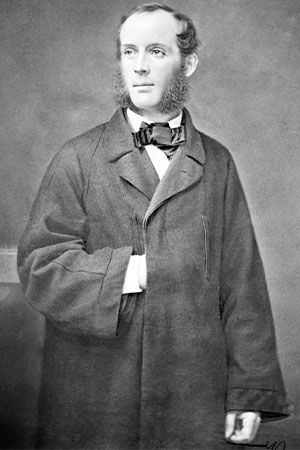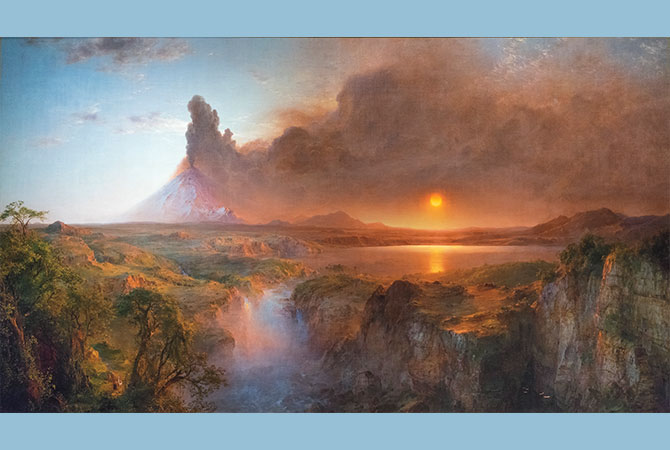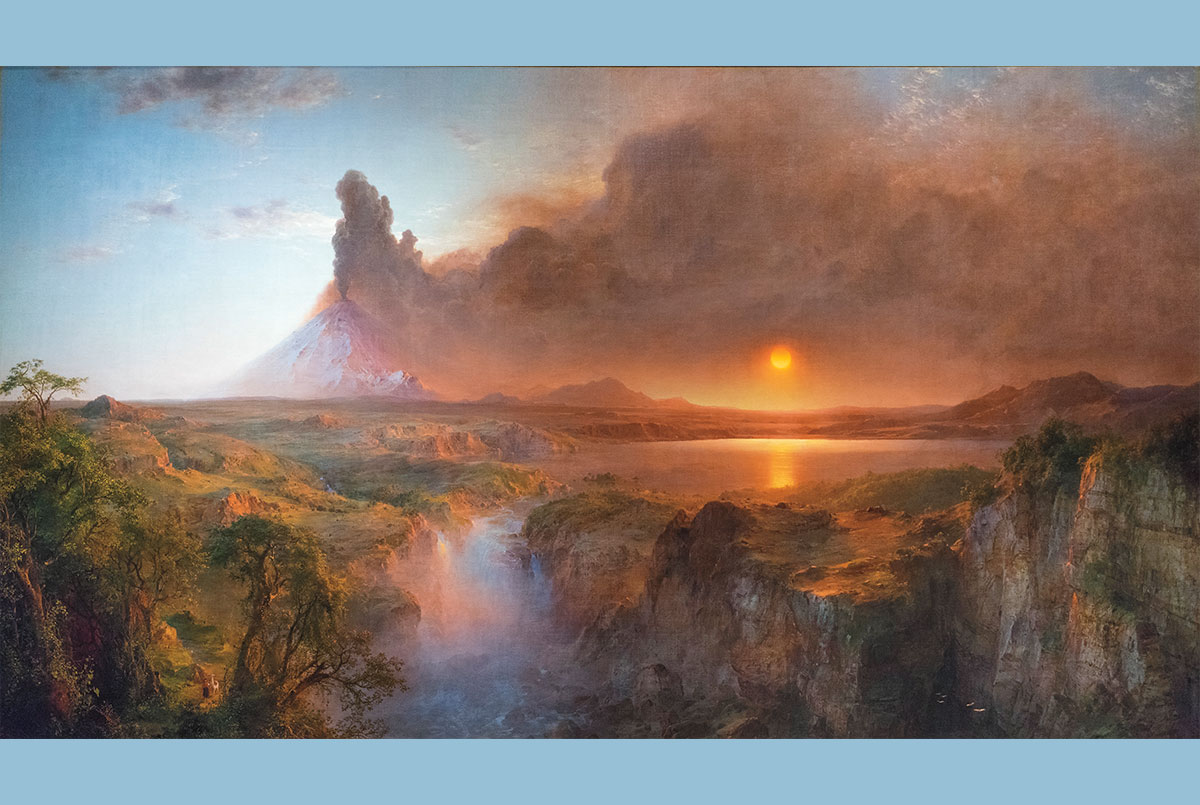
Frederic Edwin Church. Photo credit: Matthew Brady/Library of Congress via Wikipedia.
Frederic Edwin Church
Dark smoke and ash rise from a volcano and drift across the sky. The sun blazes through the haze as if preparing for battle with the mountain. The dramatic painting above, Cotopaxi, represents a volcano by the same name in Ecuador’s Andes Mountains. The artist, Frederic Edwin Church, was one of the 19th century’s most famous American artists. He trained with Thomas Cole for two years in New York and then traveled the world looking for inspiration. Church intended viewers to see deeper meaning in the painting. He painted it in 1862, during the Civil War. Americans recognized symbols that present a parable for this national tragedy in the painting. Read on to learn how Church composed the scene, what it represents, and why viewers lined up to see the sensational painting.


